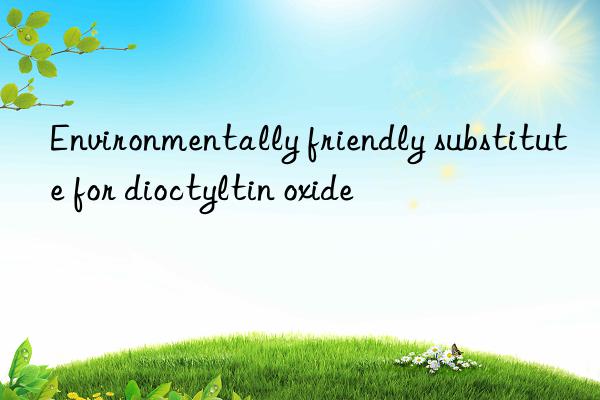
Di-n-octyltin oxide (DOTO) is widely used in polyurethane, polycarbonate and other materials due to its efficient catalytic properties. It is widely used in the field of organic synthesis. However, in recent years, the international use of dioctyltin oxide has been increasingly restricted due to its potential bioaccumulation and potential toxicity to the environment and human health, especially its effects on the reproductive system. The EU REACH regulations and other international standards have set strict restrictions on its use. Therefore, finding environmentally friendly alternatives to dioctyltin oxide has become an urgent need in the industry.
Criteria for selecting alternatives
Ideal environmentally friendly alternatives should have the following properties:
- Efficient catalytic activity: It can effectively catalyze related chemical reactions to ensure production efficiency.
- Low-toxic or non-toxic: Little impact on human health and the ecological environment.
- Biodegradability: Ability to break down in the natural environment, reducing long-term cumulative risks.
- Cost-effectiveness: Compared with dioctyltin oxide, it has equivalent or better economic benefits.
- Stability: Remains stable during storage and use and is not prone to deterioration.
Examples of environmentally friendly alternatives
1. Organobismuth compounds
Organobismuth compounds (such as tributylbismuth oxide) as catalysts have been considered as effective alternatives to dioctyltin oxide due to their low bioaccumulation potential and relatively low toxicity. They show good catalytic activity in the synthesis of polyurethanes and polycarbonates, and in some applications the catalytic efficiency is even higher than that of dioctyltin oxide.
2. Zinc Compounds
Zinc compounds, such as zinc acetate, are also being explored as environmentally friendly catalysts. Although their catalytic efficiency may be slightly lower than that of dioctyltin oxide, zinc compounds can still meet the needs of industrial production by optimizing reaction conditions and catalyst formulations.
3. Titanate Catalyst
Titanate catalysts, such as titanium tetrabutoxide, have high catalytic activity and good thermal stability. They have proven effective in the manufacture of polyurethane foam while reducing negative environmental impact.
4. Organic Amine Catalyst
Organic amine catalysts, such as dimethylcyclohexylamine, have gradually become alternatives to dioctyltin oxide due to their high selectivity and environmental friendliness. They can effectively promote the reaction between isocyanates and polyols in polyurethane synthesis and have less impact on the environment.
5. Solid Acid Catalyst
Solid acid catalysts, such as zeolites, silica-supported metal oxides, are being developed for various organic synthesis reactions, including the synthesis of polyurethanes, due to their high catalytic activity, recyclability, and environmental compatibility.
Research and Development
Although several environmentally friendly alternatives have been discovered and are beginning to be used in industry, the search for more efficient and environmentally friendly catalysts remains an active area of research. Advances in new materials science and green chemistry are expected to bring about new breakthroughs. For example, new catalysts prepared through nanotechnology or biocatalysts developed through bioengineering methods may become alternatives to dioctyltin oxide in the future.
Conclusion
With the increasing global awareness of environmental protection, research on alternatives to dioctyltin oxide has become an important topic in the fields of chemistry and materials science. Organic bismuth compounds, zinc compounds, titanate catalysts, organic amine catalysts and solid acid catalysts are currently relatively mature environmentally friendly alternatives. In the future, as scientific researchers continue to explore new catalysts, we are expected to see more efficient and environmentally friendly catalysts used in industrial production, contributing to the promotion of green chemistry and sustainable development. Continuous innovation in this field not only helps reduce pressure on the environment, but also promotes the transformation of the chemical industry into a more environmentally friendly and healthy direction.
Extended reading:
bismuth neodecanoate/CAS 251-964-6 – Amine Catalysts (newtopchem.com)
stannous neodecanoate catalysts – Amine Catalysts (newtopchem.com)
polyurethane tertiary amine catalyst/Dabco 2039 catalyst – Amine Catalysts (newtopchem.com)
N-Methylmorpholine – morpholine



 微信扫一扫打赏
微信扫一扫打赏
